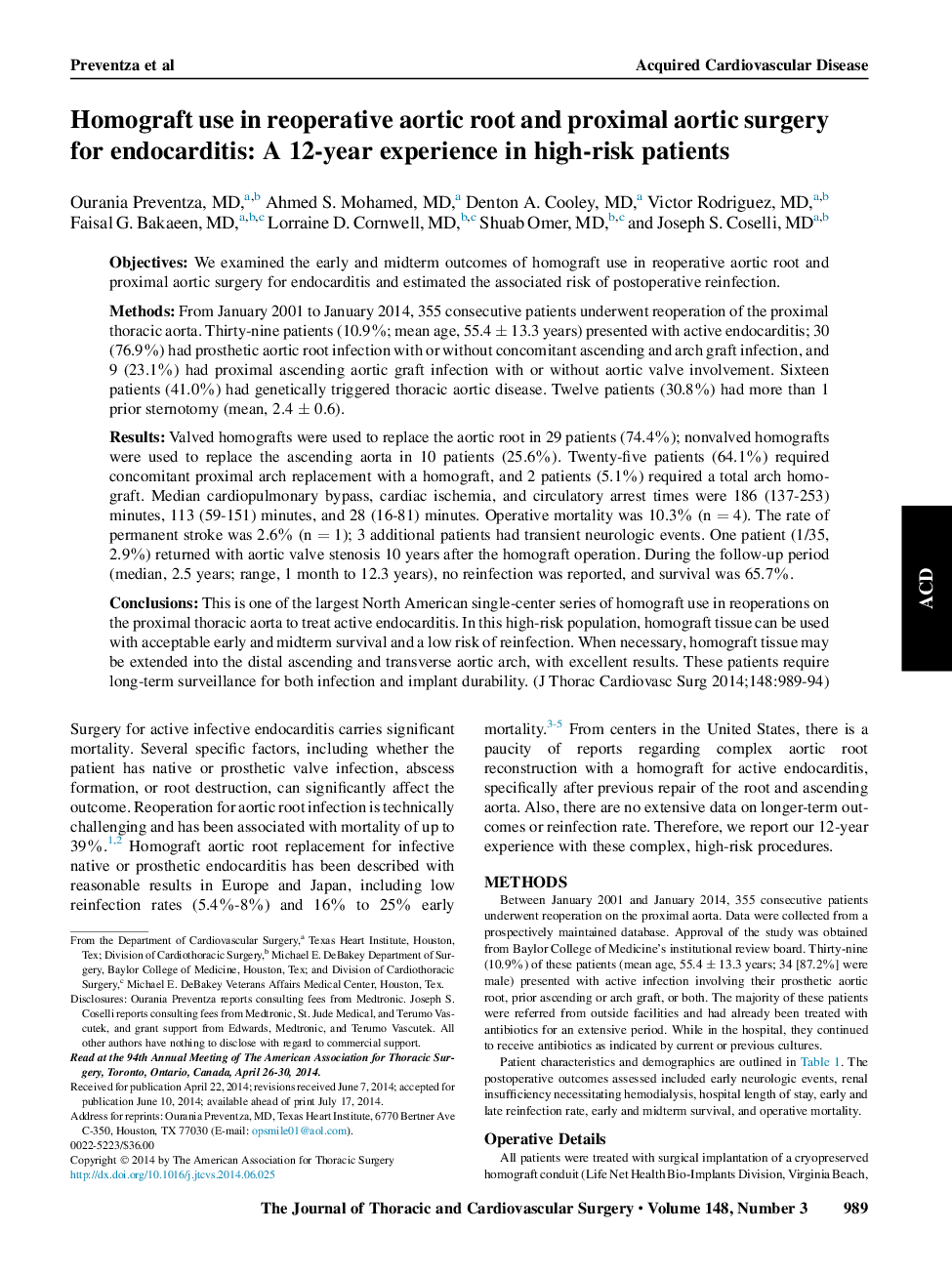| Article ID | Journal | Published Year | Pages | File Type |
|---|---|---|---|---|
| 5989325 | The Journal of Thoracic and Cardiovascular Surgery | 2014 | 6 Pages |
ObjectivesWe examined the early and midterm outcomes of homograft use in reoperative aortic root and proximal aortic surgery for endocarditis and estimated the associated risk of postoperative reinfection.MethodsFrom January 2001 to January 2014, 355 consecutive patients underwent reoperation of the proximal thoracic aorta. Thirty-nine patients (10.9%; mean age, 55.4 ± 13.3 years) presented with active endocarditis; 30 (76.9%) had prosthetic aortic root infection with or without concomitant ascending and arch graft infection, and 9 (23.1%) had proximal ascending aortic graft infection with or without aortic valve involvement. Sixteen patients (41.0%) had genetically triggered thoracic aortic disease. Twelve patients (30.8%) had more than 1 prior sternotomy (mean, 2.4 ± 0.6).ResultsValved homografts were used to replace the aortic root in 29 patients (74.4%); nonvalved homografts were used to replace the ascending aorta in 10 patients (25.6%). Twenty-five patients (64.1%) required concomitant proximal arch replacement with a homograft, and 2 patients (5.1%) required a total arch homograft. Median cardiopulmonary bypass, cardiac ischemia, and circulatory arrest times were 186 (137-253) minutes, 113 (59-151) minutes, and 28 (16-81) minutes. Operative mortality was 10.3% (n = 4). The rate of permanent stroke was 2.6% (n = 1); 3 additional patients had transient neurologic events. One patient (1/35, 2.9%) returned with aortic valve stenosis 10 years after the homograft operation. During the follow-up period (median, 2.5 years; range, 1 month to 12.3 years), no reinfection was reported, and survival was 65.7%.ConclusionsThis is one of the largest North American single-center series of homograft use in reoperations on the proximal thoracic aorta to treat active endocarditis. In this high-risk population, homograft tissue can be used with acceptable early and midterm survival and a low risk of reinfection. When necessary, homograft tissue may be extended into the distal ascending and transverse aortic arch, with excellent results. These patients require long-term surveillance for both infection and implant durability.
